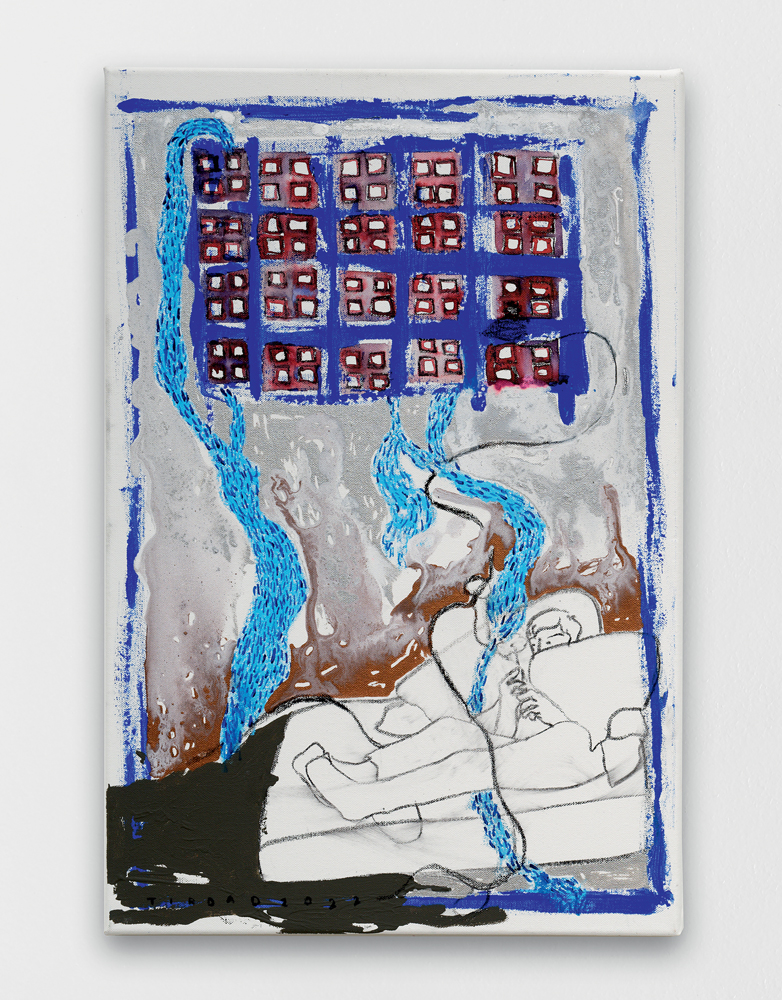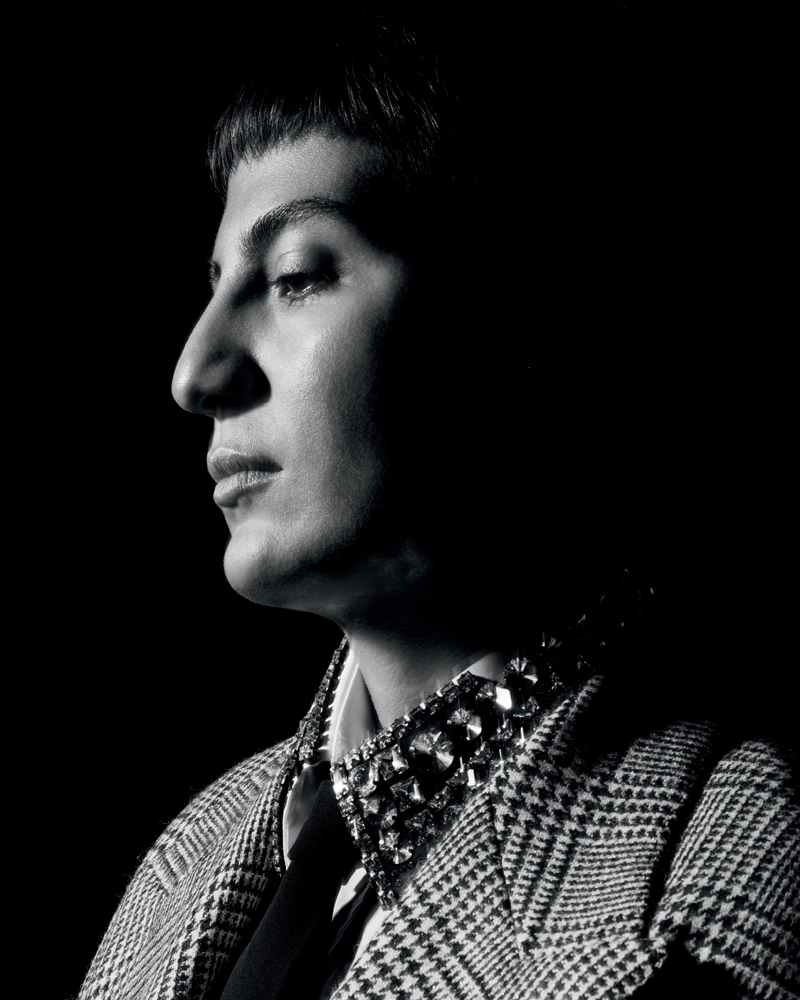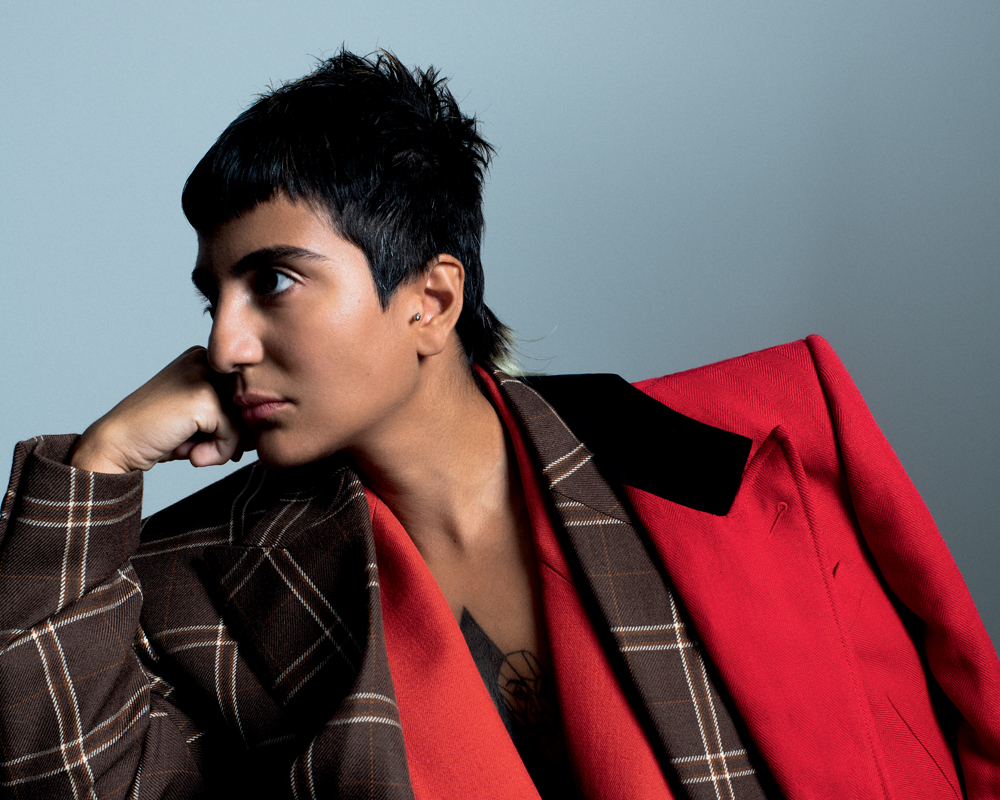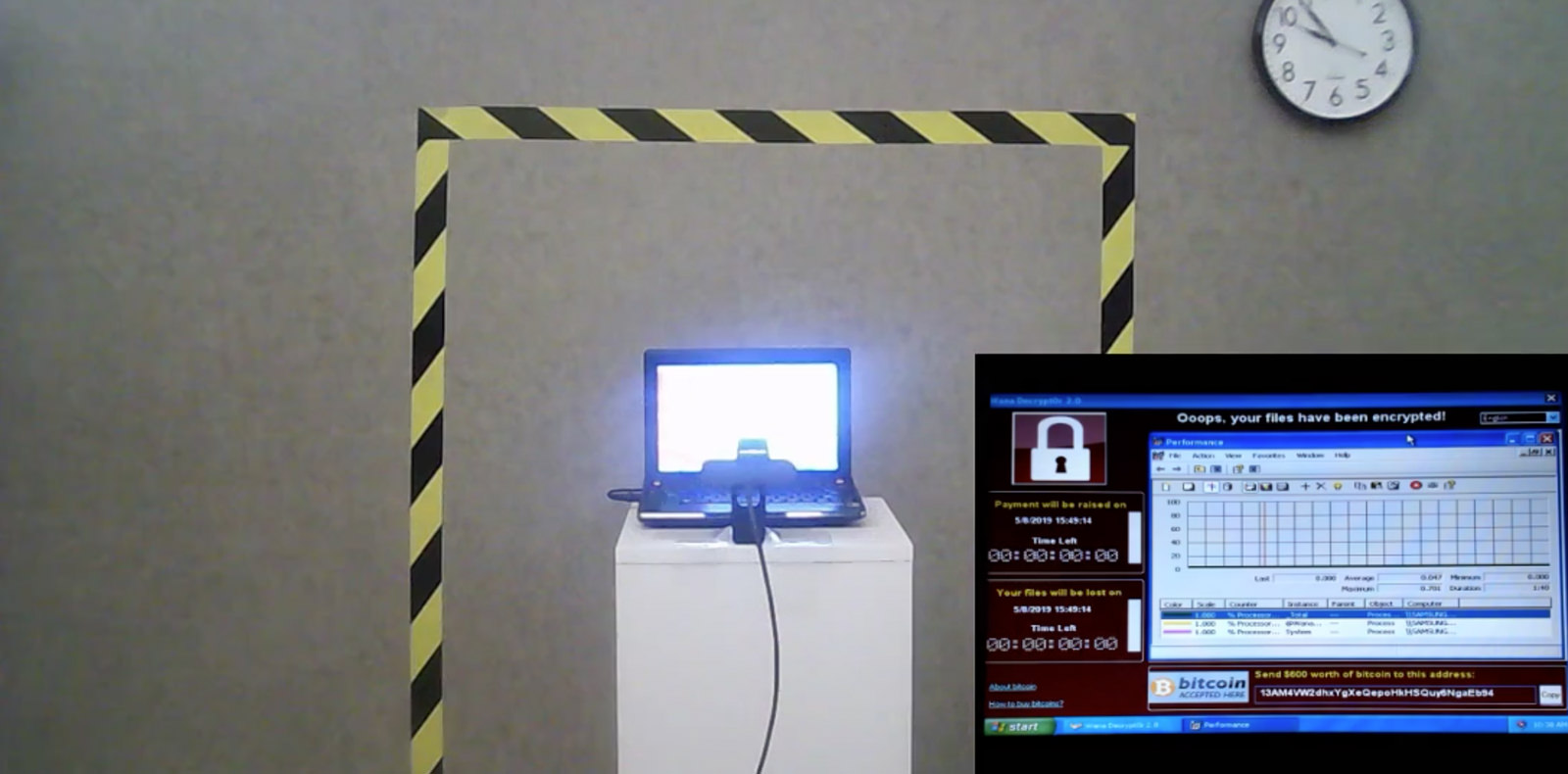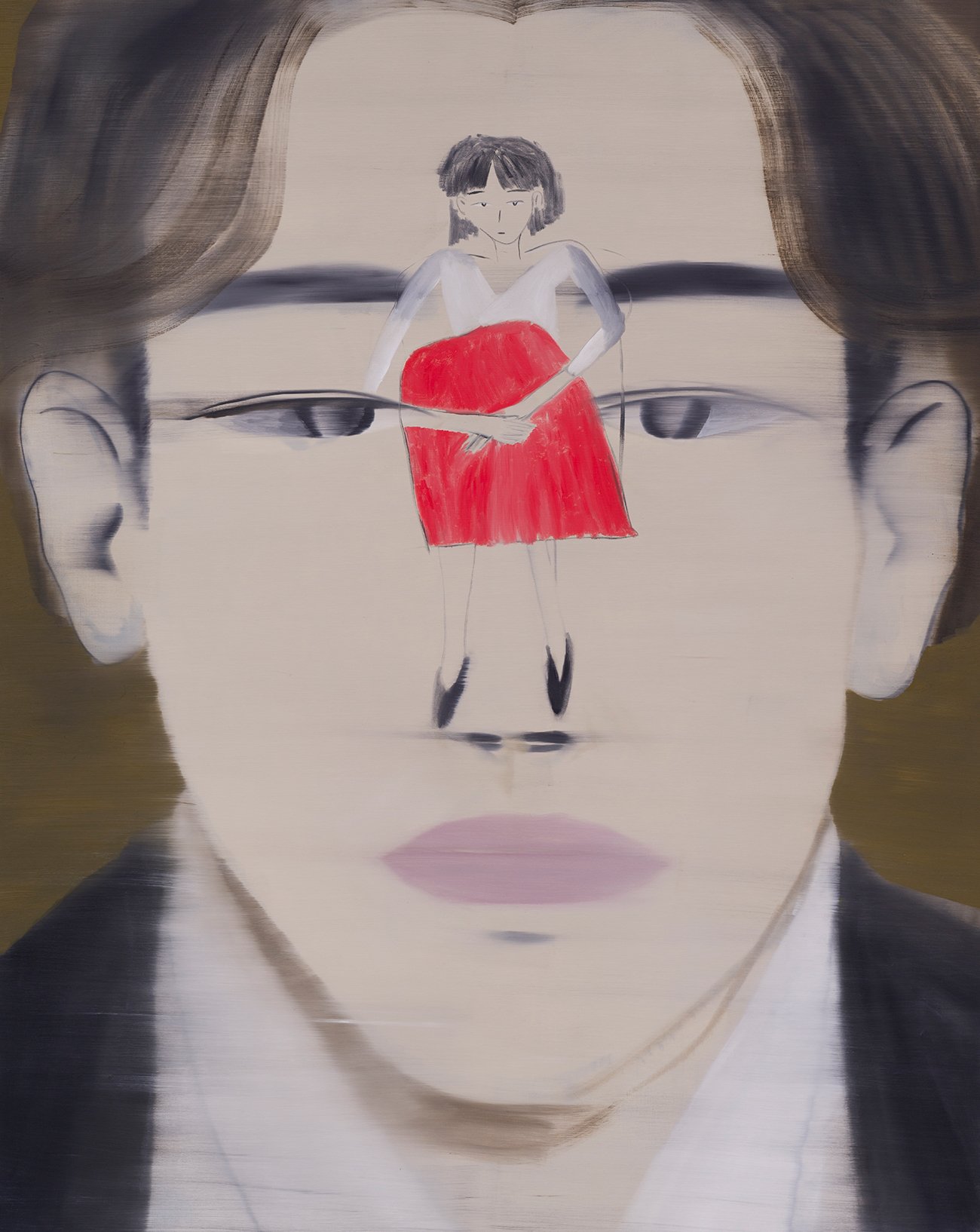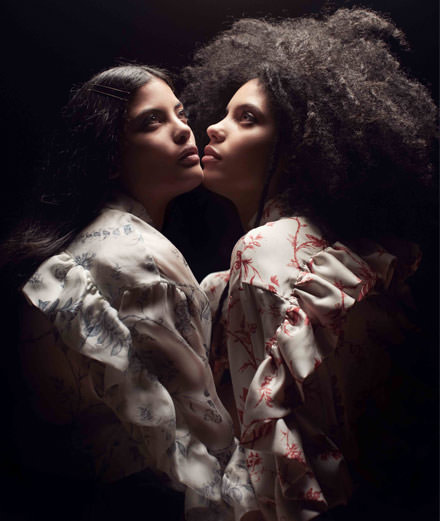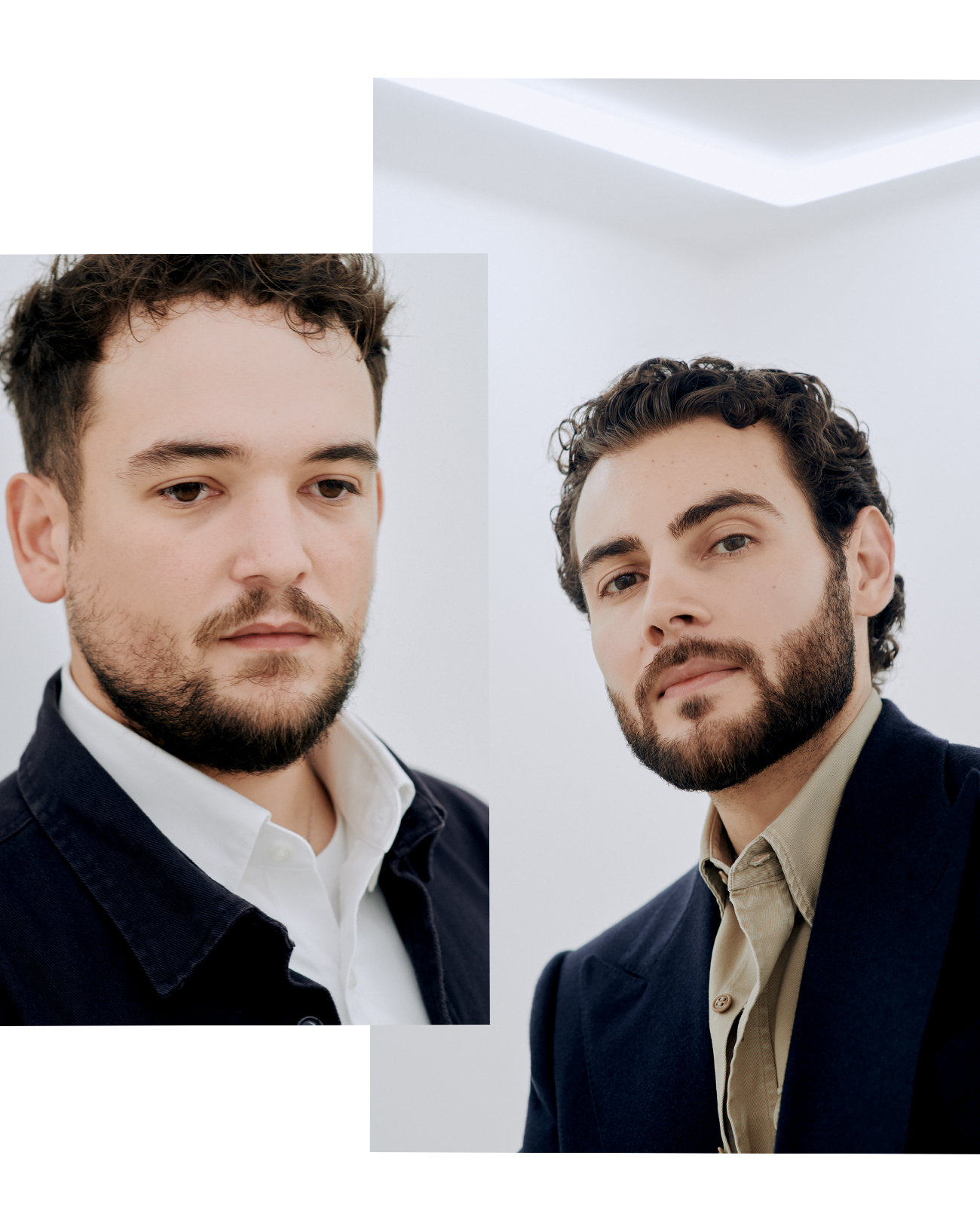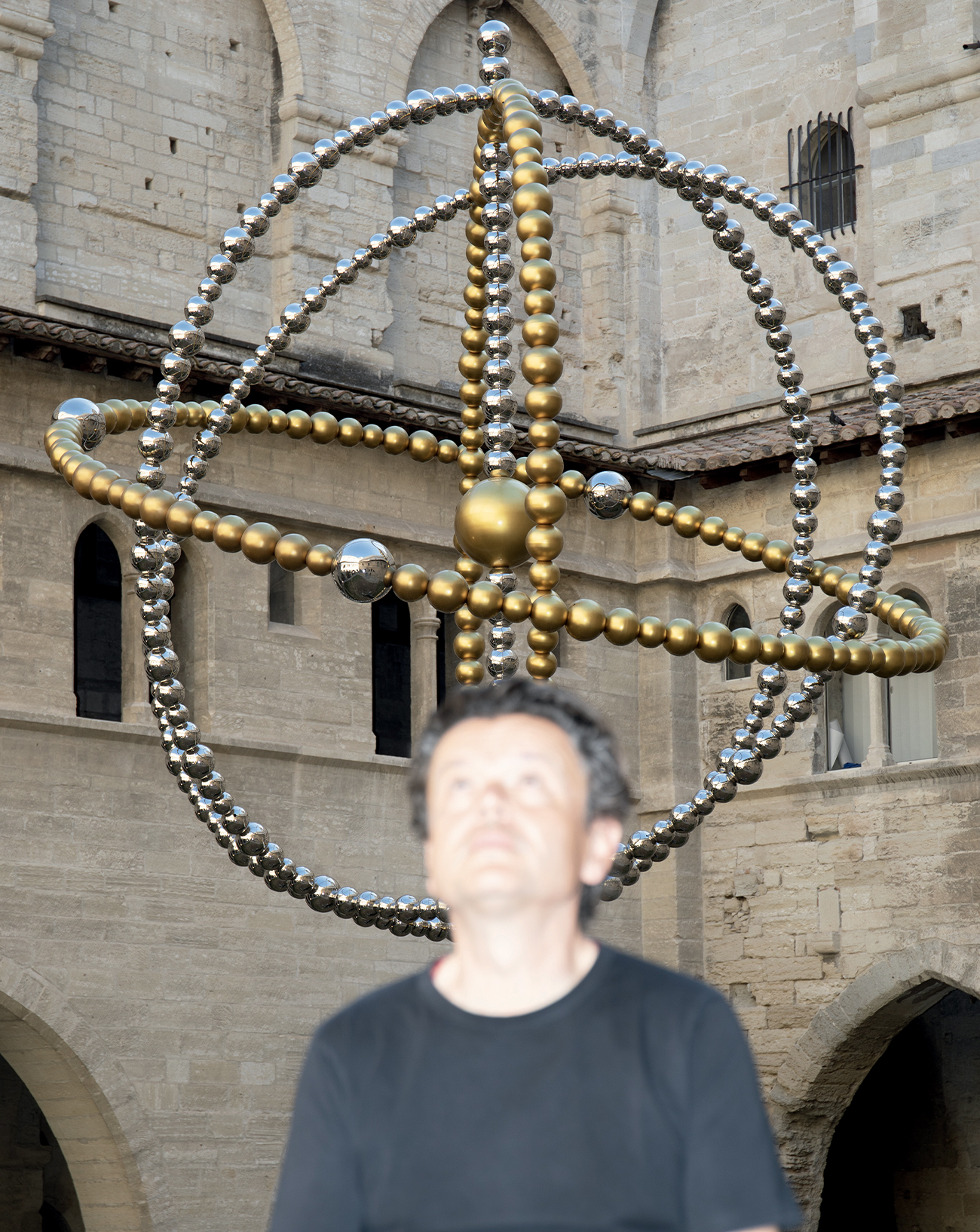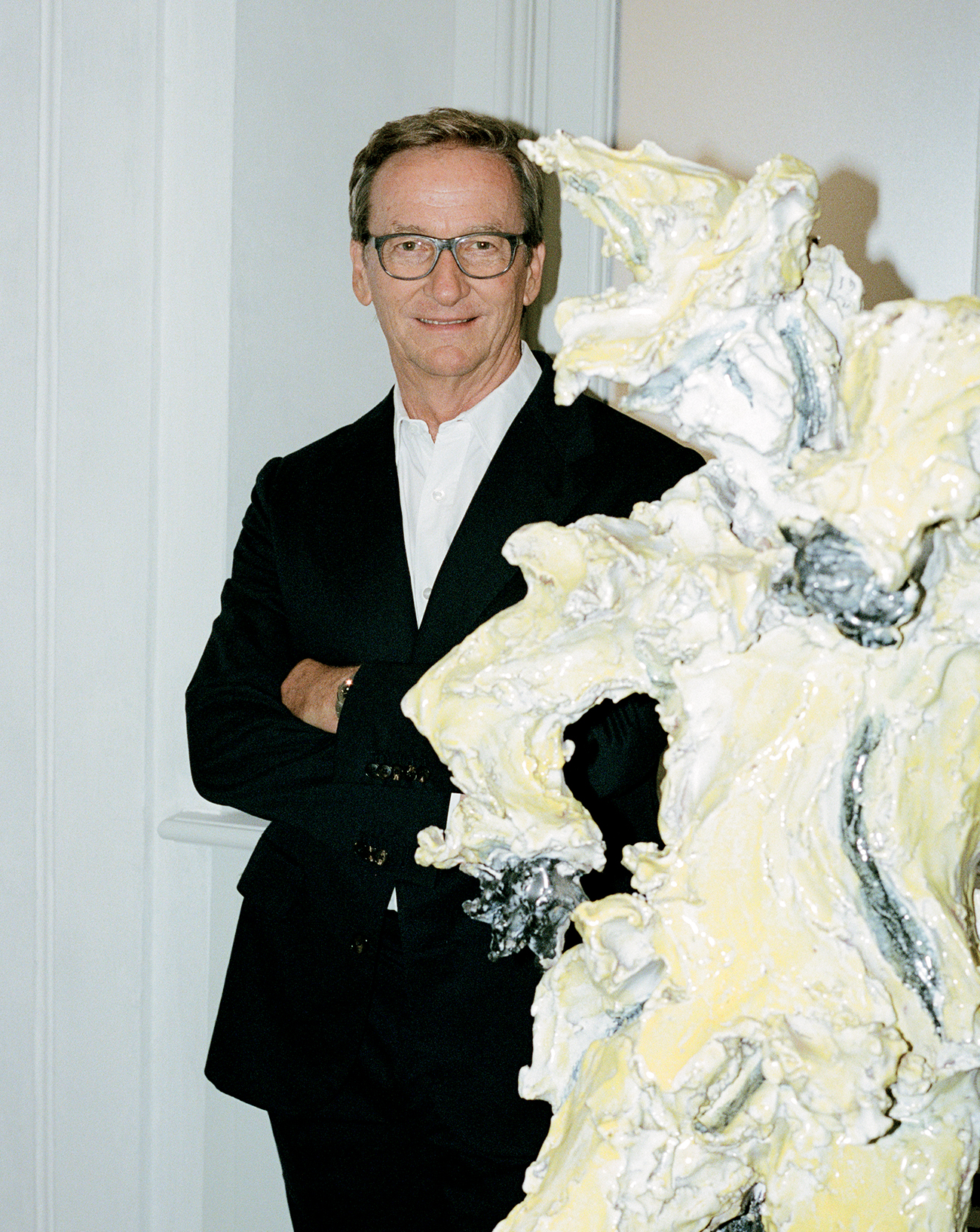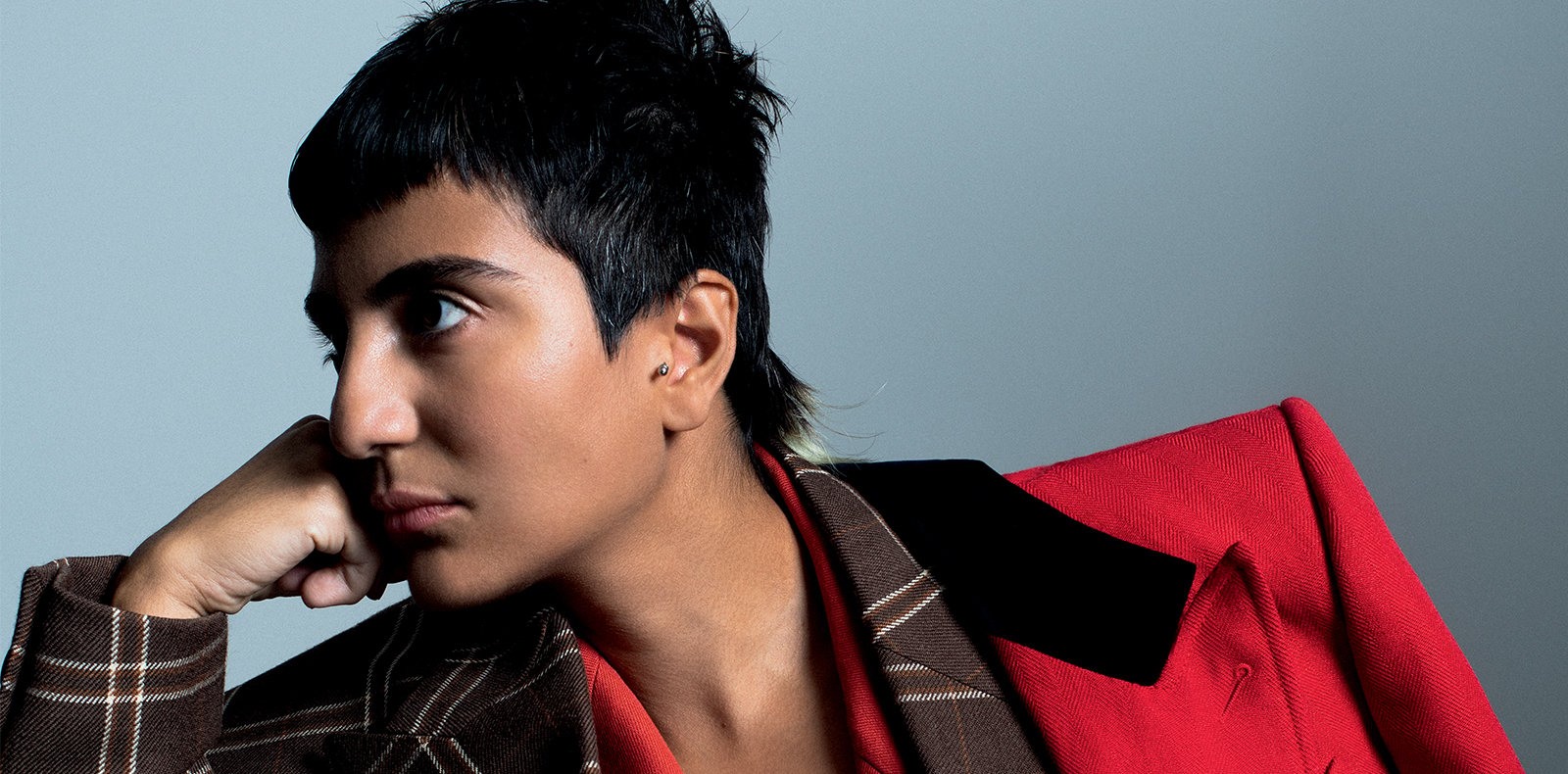
7
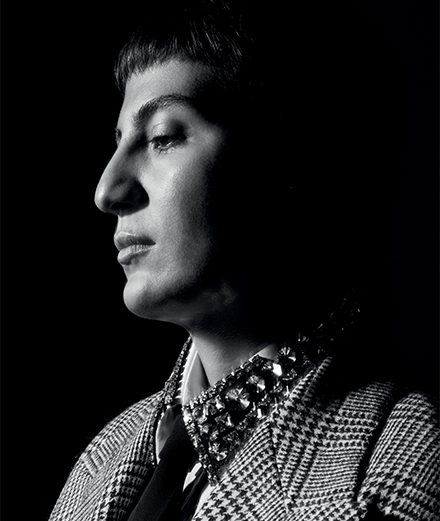
7
Artist Tirdad Hashemi expresses a primal, universal, violent energy that echoes the state of our contemporary world
Once again, Numéro art teams up with Gucci to showcase young and promising talents from the French artistic scene. Born in Tehran, in 1991, Tirdad Hashemi expresses a primal, universal, violent energy in her drawings and paintings, and energy that echoes the state of our contemporary world.
Portraits by Eva Wang,
Styling by Ferdi Sibbel Ingrid Luquet-Gad.
An eruptive approach to painting
Violence is eruptive. Deaf and blind. It is a vital flow, with no other aim than to exist. A wordless cry, endowed with the universal quality that connects all those who have fled the norm. And yet, it is a vehicle of incandescent creation, of the kind that drives and consumes the artist Tirdad Hashemi. In Paris, we discovered her through small works on paper, scenes rooted in a grey, gloomy, solitary cityscape where everyone reluctantly takes the metro, worries about being ghosted, experiences police brutality. Above all, everyone is looking for a refuge, a bit of warmth, a feeling of communion, whether in the privacy of a home, the heat of a club or the fleeting chemistry of embracing bodies. And always this primal, inner, universal surge, which no threshold or door can contain and which rises from the entrails to splatter reality with blood, water, sun, fire.
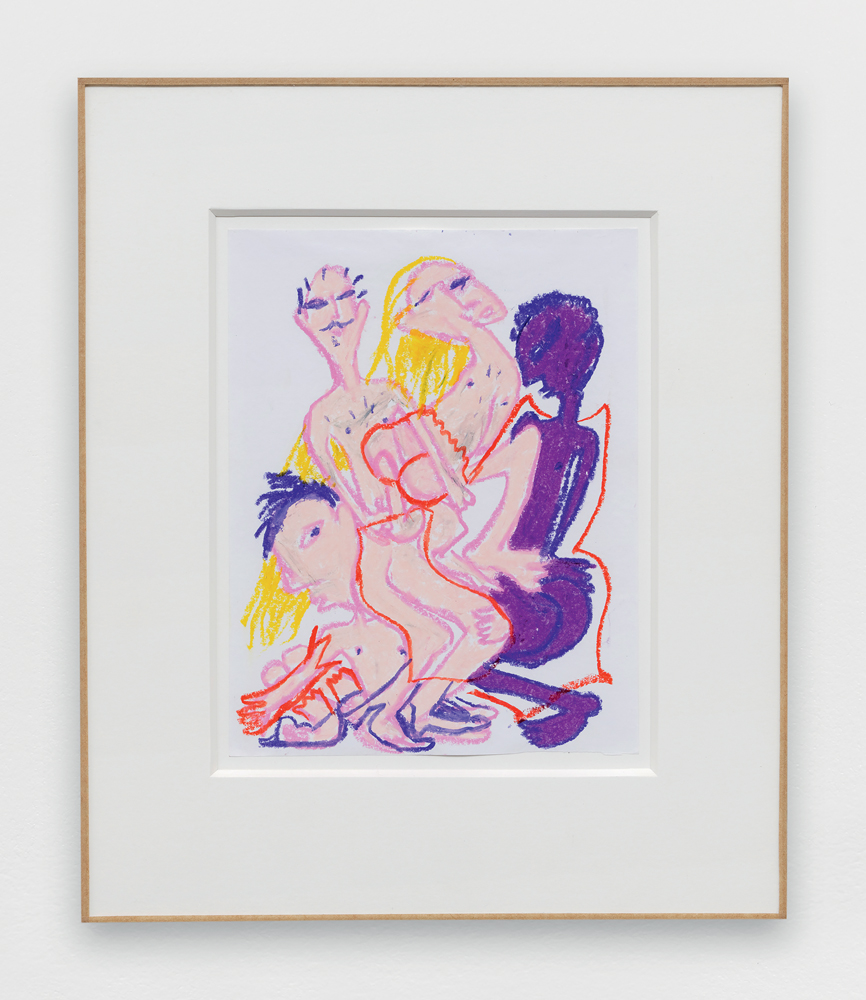
From Tehran to Berlin, violence expressed in an intimate way
Born in 1991 in Tehran, Hashemi left Iran to live openly as a gay woman and now travels on a perpetual loop between her native city, Istanbul, Paris and Berlin. Her small works on paper bear witness to her desire to cast off all ties; she started painting, she says, “because it allowed me to express things I couldn’t say with words.” Her pictures are embedded in everyday life, her own and that of her friends in exile, but she chose her medium precisely because it allowed her to detach herself from the matter-of-fact, to take a step back from a visible reality that is too monolithic, which she sends packing, sailing, flying. This back and forth between what is there, for everyone, and what could be, for those close to her, also plays out in that eruptive force. “I don’t watch TV because it’s unbearable for me to hear about all those catastrophes, every day, every hour, every second. I face urban violence on a daily basis, the violence of life in big cities. And all this appears in my paintings in the form of natural disasters against which the individual cannot fight.”
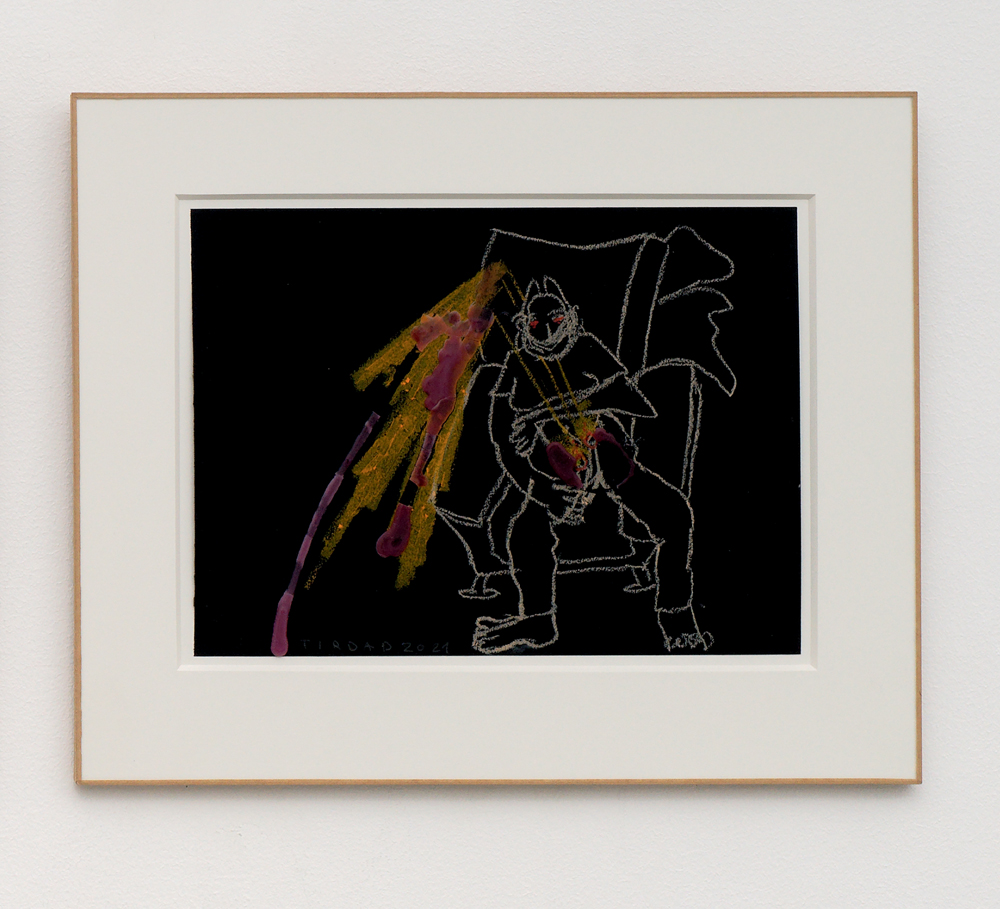
Diving into collective art to find peace
Last winter, during a residency at Berlin’s B.L.O., she began a collaboration with Soufia Erfanian. “We both come from traditional families where the topic of emotions, especially those related to sexuality or gender, never found their rightful place. With this project, here we are sitting together at breakfast, discussing it with the whole world. The project will continue as long as Soufia and I are together.” The representation has also shifted, even though it’s no calmer. Rather, in the midst of a volcanic world, two female figures face up, stand up and form an elective family, unfazed by uncontrollable turmoil. This was echoed in the recent collective exhibition La Fugitive at Ivry-sur-Seine’s Crédac, where they showed a series of six works on paper, one of which is titled The Safest Place to Find Is Behind Your Hair.
Tirdad Hashemi is represented by gb agency in Paris.
